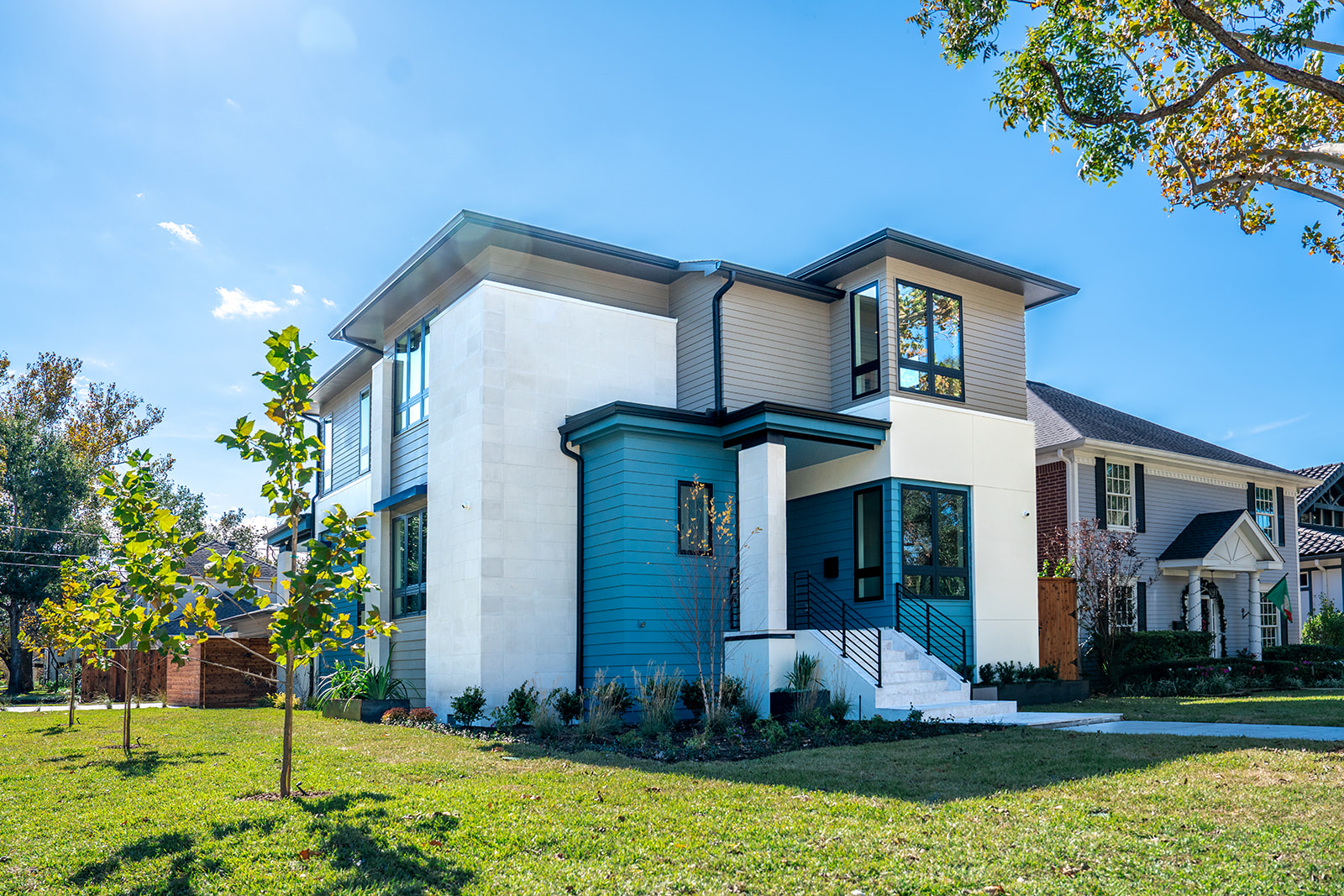Indoor air quality (IAQ) has never been more critical, with people spending nearly 90% of their time indoors. From allergens and pollutants to mold and volatile organic compounds (VOCs), the air inside our homes can harbor harmful contaminants that affect respiratory health, energy levels, and overall well-being. However, technology is advancing, giving homebuilders and homeowners new, smarter solutions to monitor and improve IAQ more efficiently than ever before.
2025 is shaping up to be a transformative year for IAQ advancements, making clean indoor air more accessible. Innovations for addressing clean air in homes are getting more attention, from high-tech purification technology to more efficient exhaust fans to reimagining how home air conditioning systems can operate more effectively. By integrating these future-focused technologies, IAQ gets a front-row seat in homebuilding, creating high-performance homes that maximize health as well as comfort.
Evolution of IAQ: From Central Air to Smart Ventilation
Indoor air quality has come a long way since the introduction of air conditioning in the early- to mid-20th century. Early HVAC systems focused primarily on temperature control, with minimal attention to air filtration or ventilation efficiency. As energy codes became more stringent and homes were built more airtight, builders and homeowners realized that poor ventilation could lead to stale air, trapped pollutants, and excess moisture. These challenges spurred innovations like high-efficiency filtration, energy recovery ventilators (ERVs), and automated ventilation systems designed to enhance comfort and air quality.
Today, homebuilders are designing and building airtight homes that require strategic air management. "Historically, we lost up to 30% of heating and cooling energy through ductwork leaks," explains Ken Nelson, Panasonic’s IAQ expert. "Now, we understand that the key isn’t just sealing ducts — it’s sealing the entire building envelope and then using technology to redistribute and refresh the air efficiently." Modern homebuilders are doing just that: Integrating equipment and building science-based ventilation solutions that improve IAQ and the standard of healthy homebuilding along with it.
3 Smart Approaches to IAQ for Healthier Homes
Maximizing your IAQ options requires advanced technology, strategic ventilation, and smart material choices. More and more, builders are discovering that the most effective solutions, equipment, and techniques fall into three categories:
Advanced Air Purification
One of the biggest trends in IAQ technology is the rise of high-tech air purifiers that target airborne contaminants with chemistry, not just mechanical filtration. Panasonic’s WhisperAir Repair with nanoe™ X technology is a perfect example. Operating constantly and quietly in the background of your home, WhisperAir Repair creates hydroxyl radicals from moisture in the air and uses the particles to neutralize mold, viruses, odors, and allergens and prevent their spread.
Smart Ventilation and Energy Recovery Innovations
Proper ventilation is a cornerstone of good IAQ, and energy recovery ventilators are fast becoming an essential, energy-efficient component that helps builders meet high standards for air exchanges in homes without sacrificing heating or cooling efficiency.
“Your day should start with the ERV. Because now you can control the outdoor air coming into your house,” says Nelson. “You can control the temperature, and now your mechanicals don’t have to work as hard.” Modern ERVs not only bring in fresh air but also recover heat or cooling energy from outgoing air. This helps maintain indoor comfort while reducing energy waste.
Adding intelligent sensors to homes helps HVAC systems work in tandem with ERVs to optimize IAQ based on occupancy patterns and air quality measurements. Humidity and occupancy sensors like Swidget are easy-to-install, accessible options that activate exhaust fans throughout your home automatically as needed. In a Swidget-enabled bathroom, for instance, when someone enters the space or the humidity rises during a shower, these wi-fi connected sensors can automatically activate the bathroom exhaust fan or send the homeowner a notification of high humidity.
Green Building Materials in IAQ
Not all IAQ solutions are related to a home’s ventilation. Using green building materials and finishes during construction can help reduce airborne contaminants that have, historically, come from the house itself. A variety of innovations in building products focus on reducing indoor pollutants at the source:
-
Low-VOC paint and cleaners: Traditional paints and coatings can emit harmful chemicals that can cause complaints from nausea to confusion in high doses. Low-VOC alternatives have become increasingly popular in the last 25 years, so occupants can worry less about the fumes their paints leave behind. Additionally, Look for natural or low-VOC cleaning products to keep harmful fumes out of your home in the future.
-
Anti-microbial surfaces: Thanks to additives like Microban, new materials designed for countertops, flooring, and walls actively resist mold and bacterial growth. Natural materials like stone can also be helpful. Some experts advise against tile and grout solutions, which can harbor moisture and allow bacteria and mold to grow.
-
Radon mitigation systems: Elevated airborne radon levels in homes became a public health concern in the 1980s. The naturally occurring gas can seep in through basement walls and slabs, building up inside homes and risking lung cancer. A properly functioning radon mitigation system will continuously remove radon from the home’s air and reduce the risks associated with long-term exposure.
OASYS Concept Home in Houston, TX, photo courtesy of Panasonic Eco Systems
Future IAQ Innovations on the Horizon: Panasonic OASYS™
Technology has advanced home ventilation, but Panasonic is at the forefront of the next generation of improved indoor air quality. Its newly launched OASYS™ system, which delivers a new approach to HVAC, includes cutting-edge Panasonic products to improve IAQ with energy-efficient, intelligent systems that prioritize comfort and health.
Panasonic sets a new standard for home air quality management with OASYS™ by integrating advanced ventilation, air purification, and heat recovery. “We’re using all Panasonic products — the exhaust fans, the heat pump products, and the ERVs — to ensure everything performs predictably,” Nelson says. The proof is in the new OASYS™ concept home in Houston, Texas, which uses tried-and-true Panasonic technologies in an innovative way. The result is higher-performing heating, cooling, and ventilation than most North American homes have ever seen.
“The house is completely flushed with re-freshed air about every 17 minutes, and each room ‘communicates’ with the others through an advanced pressure system, ensuring continuous air movement,” Nelson explains. Featuring centrally located mechanicals in a dedicated “air conditioning room,” the OASYS™ system drives airflow throughout the house using multiple smart fans, ensuring even distribution of fresh, filtered, conditioned air while maintaining efficiency.
“We’re sealing homes to a much higher standard now than ever before, reducing air leakage and keeping conditioned air inside,” Nelson says. “When we focus on sealing the building envelope first, we can make mechanical systems more efficient and dramatically improve IAQ.” Because of its continuous air movement, the OASYS™ system helps high-performance homebuilders ensure their homeowners have a constant stream of fresh, filtered air that dramatically reduces airborne contaminants and the health concerns that come with them.
Be Part of the Clean Indoor Air Revolution
With technology rapidly advancing, builders and homeowners have access to a range of smart, efficient solutions to create healthier indoor environments. IAQ innovations are transforming how we think about home air quality, from air purification to energy-efficient continuous ventilation to green building materials.
As Panasonic continues to lead the charge with OASYS™, the future of IAQ is not just about cleaner air — it’s about smarter, healthier homes. Builders, take the next step toward more effective IAQ systems, reach out today to learn how Panasonic’s innovative air solutions can help you build healthier, more efficient high performance homes.





